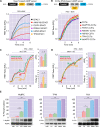Whole-Cell cAMP and PKA Activity are Epiphenomena, Nanodomain Signaling Matters
- PMID: 31165682
- PMCID: PMC6863374
- DOI: 10.1152/physiol.00002.2019
Whole-Cell cAMP and PKA Activity are Epiphenomena, Nanodomain Signaling Matters
Abstract
Novel targeted fluorescent biosensors provide key insights into very local nanodomains of cAMP and PKA activity, and how they respond differently to β-adrenergic activation in cardiac myocytes. This unique spatiotemporal detail in living cells is not available with biochemical measurements of total cellular cAMP and PKA, and provides unique physiological insights.
Figures



References
-
- Barbagallo F, Xu B, Reddy GR, West T, Wang Q, Fu Q, Li M, Shi Q, Ginsburg KS, Ferrier W, Isidori AM, Naro F, Patel HH, Bossuyt J, Bers D, Xiang YK. Genetically encoded biosensors reveal PKA hyperphosphorylation on the myofilaments in rabbit heart failure. Circ Res 119: 931–943, 2016. doi:10.1161/CIRCRESAHA.116.308964. - DOI - PMC - PubMed
Publication types
MeSH terms
Substances
Grants and funding
LinkOut - more resources
Full Text Sources

